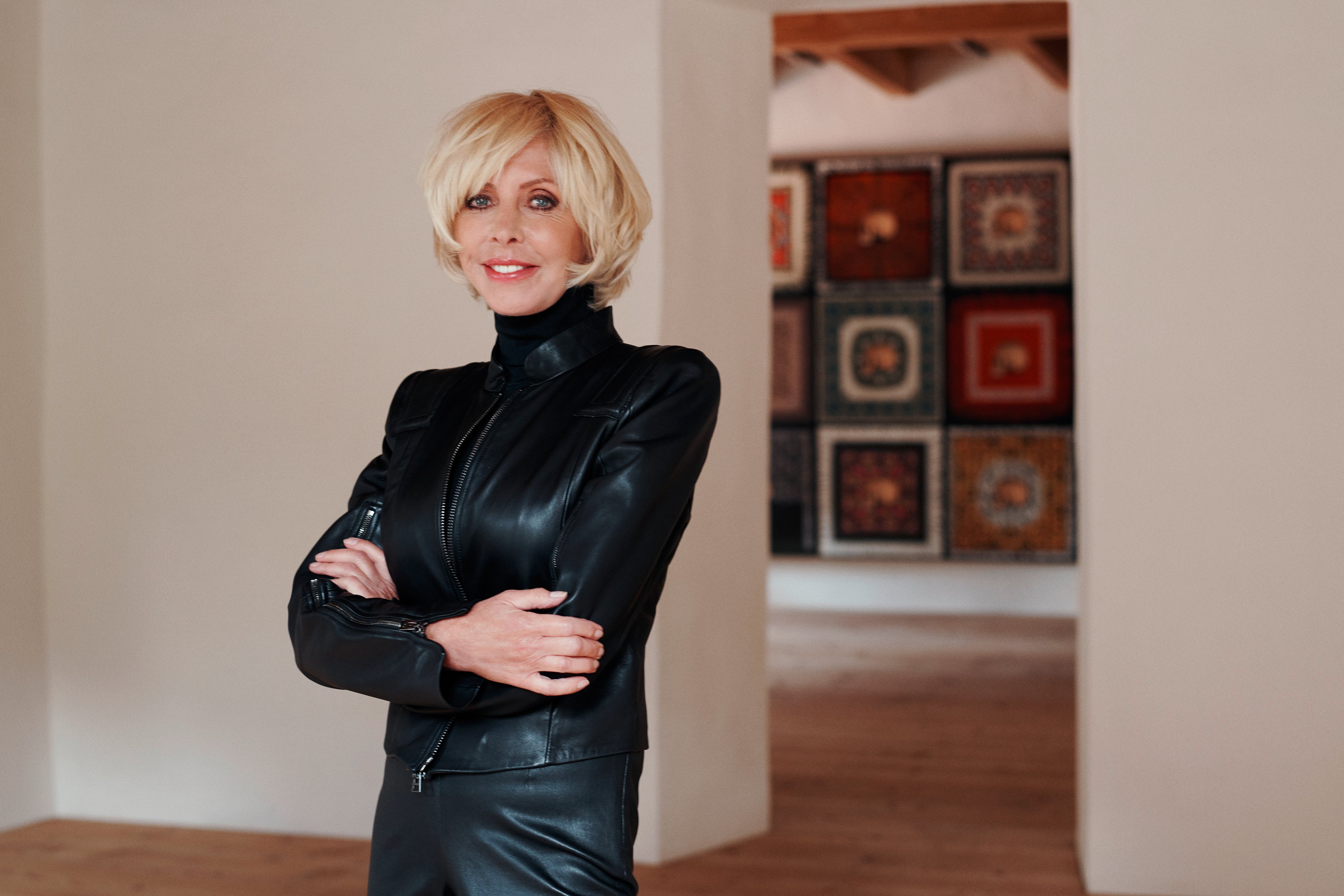
In a Swiss town of around 200 residents, a Polish billionaire has been blasting away mountain rock and digging the foundations of a vast new museum.
It isn’t Grażyna Kulczyk’s first attempt. The art collector and entrepreneur, a major figure in the Polish cultural world, tried twice before to break ground on her dream museum, taking her proposal to two cities in her home country before launching her ambitious plans in Susch, a tiny dot on the map northeast of St. Moritz.
“Time has proven that the decision to place the museum and activate the foundation in Switzerland was right,” Kulczyk says. Situated between Austria, Italy, and Germany, she hopes her museum can play an “ambassadorial role” for Polish art.
Museum Susch, which opened on January 2, is set inside a striking 12th-century monastery, which has been renovated for its new purpose. In the process, 9,000 tons of mountain rock were also carved out to make room for galleries. Indeed, Kulczyk’s ultimate goal is to unsettle the landscape in Susch and beyond.
“In the remote and beautiful mountain surroundings, we are afforded the opportunity to do something different and disruptive, to encourage a ‘slow-art’ approach to appreciating art in a contemplative, quiet context,” Kulczyk says. She calls the institution a “museum plus,” and notes that it will host discussions (which already began last year), artist residencies, and a performance program promoting experimental choreography, which Kulczyk has long supported.
In addition, the museum will house a research institute investigating the role of women in the arts and sciences. Last month, it launched its activities at a conference in Basel with an accompanying podcast. The plan is to host thinkers and interdisciplinary workshops, discussions, and exhibitions. “Rather than repeating established polemics, we are aiming for a fundamental change in gender relations,” Kulczyk says.
A view of Museum Susch © Studio Stefano Graziani; Muzeum Susch/Art Stations Foundation CH.
Kulczyk got her entrepreneurial start working with tech start-ups in the early 1990s, during a time when a woman’s role in the business world was still somewhat undefined, she says. “To achieve their goals, women had to put in significantly more effort than men in corresponding positions,” she says. “I often found myself as the only woman at the table in the industry I was active in.”
But while she champions women in business and the arts, the museum will not be strictly focused on gender. “I have never been a combatant feminist and would not like for Museum Susch to be seen solely through this prism,” she says. “I simply believe that, to date, women artists have not been positioned accurately across art institutions. I set out to correct this but—equally—also aim at giving visibility to all artists whose work—perhaps for political, social, or economic reasons—has not received appropriate recognition. My ambition is to create a productive dialogue between actors who have challenged, or even changed, the dominant canon of art history.”
Andrzej Wróblewski, Mother with Dead Child (1949). Grażyna Kulczyk Collection. © Fundacja Andrzeja Wróblewskiego / www.andrzejwroblewski.pl
While her collection includes big names such as Donald Judd, Olafur Eliasson, Jenny Holzer, and Yayoi Kusama, her program will also be a platform for significant but less widely known people, such as Romanian artist Geta Brătescu and the US-born, Berlin-based painter Dorothy Iannone. Both have works in the inaugural show, “A Woman Looking at Men Looking at Women,” which presents examples by 30 artists and looks at the female body, questioning traditional ideals of femininity. It is curated by Kasia Redzisz and is up through June 30.
Kiki Kogelnik, Hanging (1970). Courtesy of Kiki Kogelnik Foundation Copyright 1970. Kiki Kogelnik Foundation. © All Rights Reserved.
Alina Szapocznikow, Headless Torso (1968). Collection of Zachęta National Gallery of Art.
Birgit Jürgenssen, Nest (1979/2002). © Estate Birgit Jürgenssen, Vienna Courtesy of Alison Jacques Gallery, London, and Galerie Hubert Winter, Vienna.
An installation view of Zofia Kulik’s Ethnic Wars. Large Vanitas Still Life. Courtesy Studio Stefano Graziani, Muzeum Susch/Art Stations Foundation CH
Exterior view of Muzeum Susch. © Studio Stefano Graziani; Muzeum Susch/Art Stations Foundation CH